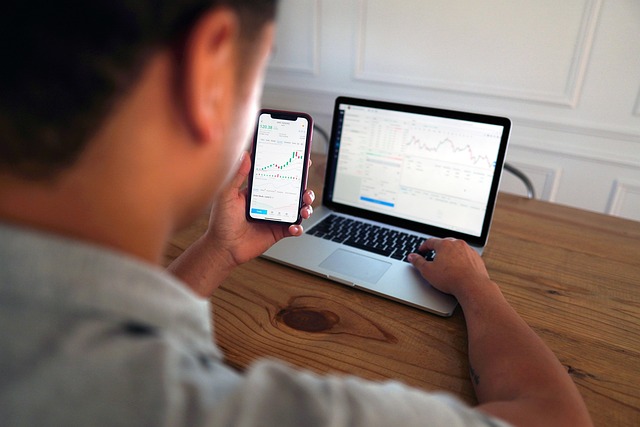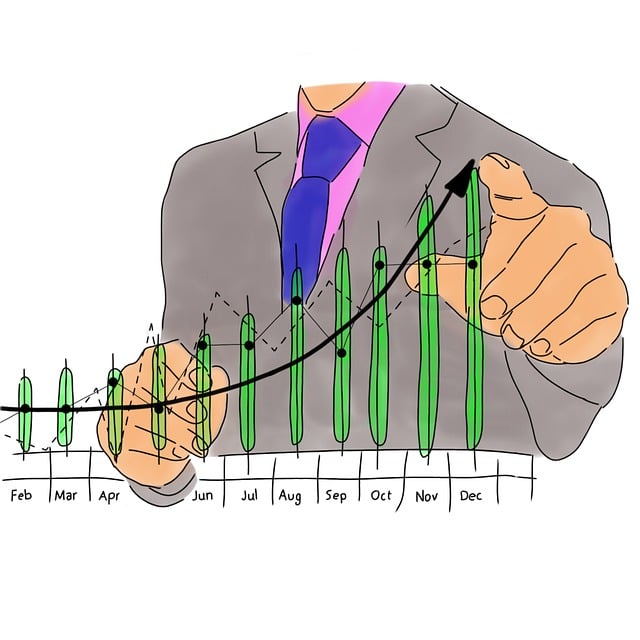Automated Day Trading Strategies
Author: Jameson Richman Expert
Published On: 2025-08-30
Prepared by Jameson Richman and our team of experts with over a decade of experience in cryptocurrency and digital asset analysis. Learn more about us.
Automated day trading strategies have become a fundamental component of modern financial markets, leveraging sophisticated technology to execute trades with speed, precision, and discipline. These systems serve as powerful tools that can process extensive datasets, identify trading opportunities, and execute orders faster than human traders—crucial advantages in the high-frequency and volatile environment of contemporary markets. With the increasing complexity of global financial landscapes—shaped by macroeconomic trends, geopolitical developments, and real-time news—automation offers traders a systematic approach that minimizes emotional biases, enforces adherence to predefined rules, and enhances overall trading consistency. When designed with meticulous attention to detail and maintained through continuous optimization, automated strategies can significantly improve profitability, scalability, and risk management. However, creating resilient and adaptive systems requires a deep understanding of market mechanics, rigorous testing protocols, and robust risk controls that can withstand shifting market regimes and unexpected events.

Understanding the Foundations of Automated Day Trading
Automated trading, also known as algorithmic trading or algo trading, involves deploying computer algorithms—sets of coded instructions—that automatically generate buy and sell orders based on specific criteria. These criteria range from simple technical indicator thresholds to complex statistical models and machine learning algorithms capable of dynamic adaptation. The core strength of automated trading lies in its ability to analyze vast quantities of market data—including price movements, volume, order book depth, and market sentiment—processing this data in real time to identify and capitalize on fleeting opportunities. Moreover, automation ensures consistent execution, removing the psychological biases and impulsiveness that often impair manual traders. The success of these systems is highly dependent on the robustness of the underlying algorithms, the quality and latency of data inputs, and the system’s ability to adapt seamlessly to rapidly changing market conditions and unusual events.
Key Components of Automated Strategies
- Market Signals and Technical Indicators: These serve as the foundational inputs for many automated strategies. Common indicators include moving averages (simple, exponential, weighted), RSI, MACD, Bollinger Bands, and volume-based measures. Strategies often combine multiple indicators to filter signals—e.g., a moving average crossover confirmed by a rising volume spike—to enhance reliability and reduce false positives. Advanced systems may incorporate pattern recognition (candlestick patterns, double tops/bottoms, head-and-shoulders), trend strength assessments, and momentum oscillators to refine entry and exit points.
- Risk Management Protocols: Robust risk management is essential for longevity. Automated systems integrate features like dynamic stop-loss and take-profit orders, volatility-adjusted position sizing, and adaptive risk controls that respond to current market conditions. For example, employing the ATR (Average True Range) to set stop-loss levels ensures the system accommodates prevailing volatility, avoiding premature exits during normal fluctuations and safeguarding capital during turbulent periods. Position sizing models—such as fixed fractional, Kelly criterion, or volatility-based methods—are embedded to optimize capital allocation and prevent overexposure.
- Backtesting and Optimization: Before deploying any system live, extensive backtesting against historical data is crucial. Metrics such as profit factor, win rate, maximum drawdown, and risk-adjusted return ratios (e.g., Sharpe, Sortino) provide insights into system performance. Optimization involves tuning parameters—like indicator periods or thresholds—but must be done cautiously to prevent overfitting, which can lead to poor out-of-sample performance. Techniques such as walk-forward analysis and out-of-sample validation are employed to ensure the strategy’s robustness across different market cycles.
- Connectivity and Execution Infrastructure: The backbone of successful automated trading is seamless integration with broker APIs and trading platforms. Low-latency connections reduce order execution delays and slippage, which is especially critical in high-frequency or scalping strategies. Reliable infrastructure—such as colocated servers, fiber-optic links, and FPGA hardware—can provide significant competitive advantages by minimizing latency. Secure, resilient connections and error-handling mechanisms prevent failures and ensure continuous operation, even during periods of high market stress.
Developing a Robust Automated Day Trading Strategy
Market Dynamics and Strategy Customization
Financial markets are inherently dynamic, influenced by macroeconomic indicators like GDP growth, inflation rates, and employment data; geopolitical events such as elections or conflicts; and real-time news flows. Consequently, a one-size-fits-all approach is often ineffective. Traders should tailor their algorithms to specific assets, market regimes, and timeframes. For example, trend-following algorithms are effective during sustained bull or bear markets but tend to underperform in sideways or volatile conditions. Incorporating adaptive mechanisms—such as market regime detection algorithms, volatility filters, or momentum strength indicators—enables strategies to modify their parameters dynamically. This adaptive approach improves resilience, reduces drawdowns, and aligns trading actions with prevailing market environments, ensuring systems remain effective across different economic cycles.
Technical Indicator Synergy and Signal Filtering
Combining multiple technical indicators creates a multi-layered decision framework that filters out false signals and enhances trade accuracy. For instance, a system might require a moving average crossover indicating a trend reversal, confirmed by an RSI divergence signaling overbought or oversold conditions, and volume spikes indicating genuine momentum shifts. Pattern recognition algorithms can identify formations like candlestick patterns, double bottoms, or head-and-shoulders, providing additional confirmation. Incorporating news sentiment filters or macroeconomic event calendars helps avoid overtrading triggered by transient or unreliable signals. This layered approach improves the signal-to-noise ratio, increases the probability of successful trades, and enhances the overall risk-reward profile.
Risk Management and Position Sizing
Effective risk management underpins sustainable trading. Automated systems should incorporate dynamic position sizing strategies that respond to real-time market volatility—measured via ATR or other volatility metrics—to maintain consistent risk exposure. Strict stop-loss and take-profit levels enforce disciplined exits, preventing emotional decision-making. Advanced models like the Kelly criterion or fixed fractional methods optimize position sizes relative to the account size and risk tolerance, balancing risk and reward. Overleverage—using excessive margin—poses a significant danger, amplifying losses during downturns and increasing the risk of margin calls. Implementing leverage caps and continuous monitoring safeguards capital integrity and ensures long-term viability.
Backtesting and Forward Testing
Rigorous backtesting against historical data validates the strategy’s potential profitability and risk characteristics. Key performance metrics include win rate, profit factor, maximum drawdown, and risk-adjusted returns. However, overfitting—where the algorithm is too finely tuned to past data—remains a significant challenge. To mitigate this, traders employ walk-forward testing, which involves sequentially optimizing on one dataset and validating on subsequent unseen data, simulating real-world deployment. Forward testing in demo accounts allows traders to observe how the system performs in live market conditions without risking capital. An incremental deployment approach—starting with small position sizes and scaling gradually—enables identification of unforeseen issues and ensures the system’s robustness and adaptability before committing larger capital.

Platform Selection and Connectivity
Choosing the appropriate trading platform and infrastructure is critical. Popular platforms like MetaTrader 4/5, NinjaTrader, and TradingView offer extensive tools for developing, backtesting, and deploying automated strategies. For institutional or high-frequency trading, low-latency infrastructure—such as co-location servers, FPGA hardware, and fiber-optic connections—can provide a decisive edge. Ensuring compatibility with broker APIs, along with robust security and error handling, prevents operational failures. Cloud-based hosting solutions and Virtual Private Servers (VPS) enable continuous operation, remote management, and scalability, ensuring strategies run seamlessly during extended trading sessions or across multiple markets.
Multi-Exchange Trading and Diversification
Diversification across multiple exchanges—like Binance, Coinbase, Kraken, and regional platforms—helps mitigate systemic risks and exploit arbitrage opportunities. Multi-exchange strategies require managing API synchronization, handling differing fee structures, and navigating API rate limits. Managing data feed discrepancies and ensuring consistent execution across platforms demand sophisticated error handling and fail-safes. Asset diversification—trading cryptocurrencies, forex, equities, or commodities—reduces reliance on a single instrument and smooths overall portfolio performance. Security measures, such as API key management and encrypted communications, are vital to prevent breaches and maintain operational integrity during multi-exchange trading.
Continuous Monitoring and Strategy Refinement
Markets are perpetually evolving, necessitating ongoing performance monitoring and system refinement. Regular reviews of key metrics—like drawdown, profit factor, win rate, and expectancy—help identify deteriorations or regime shifts. Integrating machine learning models and adaptive algorithms allows real-time parameter adjustments based on recent data, enhancing flexibility. Staying informed about macroeconomic releases, technical analysis updates, and market forecasts (e.g., Bitcoin trend predictions) supports strategic decision-making. Automated alerts, detailed logging, and comprehensive dashboards facilitate swift troubleshooting, operational transparency, and timely responses to market changes, ensuring the system remains aligned with current conditions and objectives.
Advanced Techniques and Future Trends
- Machine Learning and Artificial Intelligence: The incorporation of ML—such as neural networks, reinforcement learning, and support vector machines—enables algorithms to detect complex, non-linear patterns, improve predictive accuracy, and adapt to evolving market dynamics. Sentiment analysis models interpret social media, news, and other alternative data sources to anticipate market shifts ahead of traditional indicators.
- High-Frequency Trading (HFT): HFT strategies leverage ultra-low latency infrastructure—co-location servers, FPGA hardware, and fiber-optic links—to execute vast volumes of trades within milliseconds. These strategies often focus on arbitrage, order book manipulation, and liquidity provision, requiring cutting-edge technology and strict regulatory compliance.
- Sentiment and Alternative Data Integration: Incorporating social media sentiment scores, macroeconomic indicators, and blockchain data provides a broader informational edge, capturing market mood and potential turning points before they are reflected in price action.
- Blockchain and DeFi Innovations: Automated strategies are increasingly applied within Decentralized Finance (DeFi), engaging in yield farming, liquidity mining, flash loans, and arbitrage using smart contracts. These emerging domains emphasize speed, security, and integration with blockchain protocols, opening new avenues for algorithmic traders.

Conclusion
Building effective automated day trading strategies is a sophisticated, iterative process that combines technological expertise, rigorous testing, and adaptive learning. Success depends on developing resilient systems capable of navigating changing market landscapes, continuously analyzing performance metrics, and integrating technological advancements. No strategy guarantees perpetual success; instead, resilience and adaptability emerge from disciplined risk management, ongoing refinement, and a proactive mindset. By leveraging historical insights, real-time data, and innovative tools, traders can maintain a competitive edge in a rapidly evolving environment. Embrace continuous education and technological innovation to stay ahead in the competitive arena of automated day trading.
For further insights into advanced strategies and the latest tools, explore this comprehensive guide on Market Analysis on Binance. Stay curious, adapt proactively, and leverage technological progress to thrive amid market volatility and rapid innovation.